- In our view, the jobs report was mainly to the better side although the headline was weaker than expected. Employment grew by 151,000 in January, which was significantly lower than employment growth in Q4 (which was also revised down) and analysts’ expectations. Still the markets got some relief as markets likely expected a much more negative report. Also it is worth remembering that it is not unusual that we see slower employment growth in the following months when it has been higher-than-trend. Trend growth still seems solid, in our view.
- Also one has to take into account that the trend growth in the labour force is not that high. As we expect the participation rate to be fairly stable in the coming years, we expect the labour force to grow in the range of 100,000-150,000 per month over the next few years. Thus employment growth of 150,000 is likely sufficient to push down the unemployment rate. This effect was clear from today’s release as the unemployment rate fell to 4.9% in January from 5.0% in December (although the unemployment rate is based on a different survey than the nonfarm payrolls).
- Despite the weak activity data and poor market sentiment lately, the labour market still seems solid. Employment growth would have to decline significantly from its current pace to become a concern for Fed.
- Average hourly earnings (AHE) surprised on the upside. AHE rose 0.5% m/m in January which was higher than expected. Still, the annual growth rate declined from 2.7% in December to 2.5% in January but this mainly reflect that AHE made a jump in January last year. As AHE is by nature very volatile it is better to look at the trend. The annual growth rate in AHE has been trending up the last year and is currently nearly 1pp higher than in December 14. This reflects that the labour market has tightened significantly. As we expect the US labour market to tighten further this year, we also expect wage inflation will increase. We know from recent Fed communication that it would like to see more ‘hard’ evidence that inflation will increase. Hence, AHE will be an important market mover this year.
- Manufacturing employment continues to increase (although at a low level) the very weak manufacturing activity data in recent months. There is likely a lag between lower activity and employment, but so far employment within manufacturing has not suffered significantly. This is also positive for the overall impression of the US economy.
- With respect to our current Fed call, today’s release was no smoking gun. We still expect three hikes this year (April, September and December) although we recognise that risks are skewed towards later and fewer hikes. A smoking gun could be when Fed chair Yellen speaks next week. This is the first time we got to hear from her since Fed increased the target range in December and we will listen carefully to hear what she has to say.
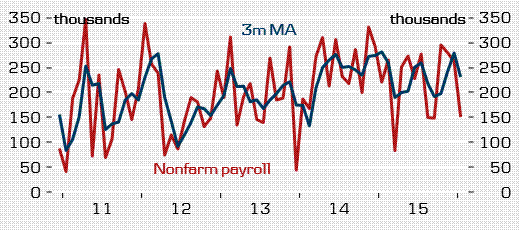
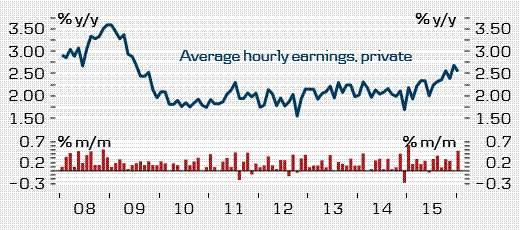
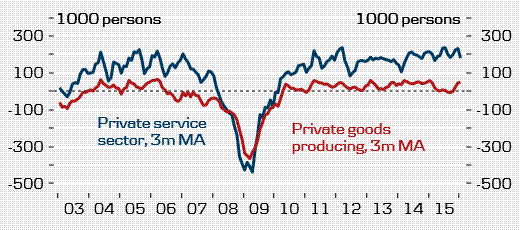
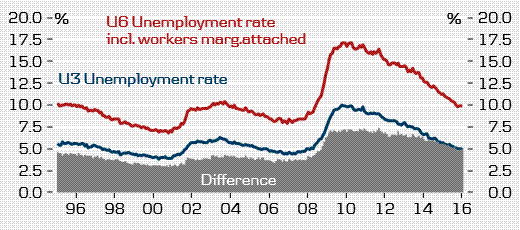
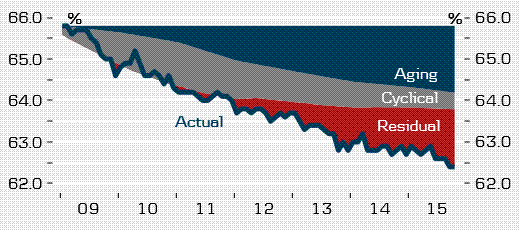
This publication has been prepared by Danske Bank for information purposes only. It is not an offer or solicitation of any offer to purchase or sell any financial instrument. Whilst reasonable care has been taken to ensure that its contents are not untrue or misleading, no representation is made as to its accuracy or completeness and no liability is accepted for any loss arising from reliance on it. Danske Bank, its affiliates or staff, may perform services for, solicit business from, hold long or short positions in, or otherwise be interested in the investments (including derivatives), of any issuer mentioned herein. Danske Bank's research analysts are not permitted to invest in securities under coverage in their research sector.
This publication is not intended for private customers in the UK or any person in the US. Danske Bank A/S is regulated by the FSA for the conduct of designated investment business in the UK and is a member of the London Stock Exchange.
Copyright () Danske Bank A/S. All rights reserved. This publication is protected by copyright and may not be reproduced in whole or in part without permission.
Recommended Content
Editors’ Picks
EUR/USD edges lower toward 1.0700 post-US PCE

EUR/USD stays under modest bearish pressure but manages to hold above 1.0700 in the American session on Friday. The US Dollar (USD) gathers strength against its rivals after the stronger-than-forecast PCE inflation data, not allowing the pair to gain traction.
GBP/USD retreats to 1.2500 on renewed USD strength

GBP/USD lost its traction and turned negative on the day near 1.2500. Following the stronger-than-expected PCE inflation readings from the US, the USD stays resilient and makes it difficult for the pair to gather recovery momentum.
Gold struggles to hold above $2,350 following US inflation

Gold turned south and declined toward $2,340, erasing a large portion of its daily gains, as the USD benefited from PCE inflation data. The benchmark 10-year US yield, however, stays in negative territory and helps XAU/USD limit its losses.
Bitcoin Weekly Forecast: BTC’s next breakout could propel it to $80,000 Premium

Bitcoin’s recent price consolidation could be nearing its end as technical indicators and on-chain metrics suggest a potential upward breakout. However, this move would not be straightforward and could punish impatient investors.
Week ahead – Hawkish risk as Fed and NFP on tap, Eurozone data eyed too

Fed meets on Wednesday as US inflation stays elevated. Will Friday’s jobs report bring relief or more angst for the markets? Eurozone flash GDP and CPI numbers in focus for the Euro.